Metallography Capability and Methodology at Electro-Spec Inc.
ESI has multiple analytical tools available to satisfy specific customer requirements along with military and industrial standards. Among these are Cross-Sectioning capabilities, Metallography, Scanning Electron Microscope, (SEM), and Energy Dispersive Spectroscopy, (EDS). These tools are also used in conjunction with plating wisdom to troubleshoot problematic plating deposits on varying materials.
Cross-sectioning, having been in use since the 19th century, is one of the oldest tools in a competent plater’s toolbox. This involves mounting a sample in a material that can then be ground and polished, (i.e. 2-part epoxy mounting material), for further investigation. Standard cross-sectioning techniques provide basic information such as multiple plating layer thicknesses. Beyond standard cross-sectioning techniques, micro cross-sectioning can provide determination of defects in the micro-structure of deposit and substrate for root cause/failure analysis. Parts can also be mounted in conductive epoxy in order to be analyzed with SEM/EDS for a more thorough and detailed plating thickness and elemental analysis.
A Metallograph is used for understanding metallurgy at the microstructure level of a given material. It provides an intense bright field in a thin, highly reflective focal plane that is necessary to determine grain structures and grain boundaries of base and plated metals at 50x-1000x. An operator can use different optical filters, prisms, and effects including Differential Interference Contrast, (DIC), which can be used for further defect analysis. For a skilled operator, a Metallograph is a quick and easy tool to use for troubleshooting activities.
The SEM is a non-optical microscope that uses energized electrons to reflect off of the surface of the sample to create an image. A metallic sample will reflect back good imagery without any prior preparation. Non-metallic items will morph and charge up without any prior preparation. This preparation would include a metal/carbon sputter coater. SEM detection can be made to be extremely sensitive to surface contamination and topography due to the 3D imaging and large magnification factor available. It is exceptionally useful when used in conjunction with X-ray spectroscopy. Cross-sections can be utilized in the SEM/EDS but must use conductive media with the mounting material.
As previously mentioned, SEM/EDS is an X-ray spectroscopy used with an SEM. This provides elemental identification but cannot identify molecular structure except in very rare instances. SEM/EDS is extremely useful for FOD, (Foreign Object Debris), identification and analysis by interrogating individual particles at high magnification, (up to 10,000x). SEM/EDS can also be used for elemental surface mapping. ESI utilizes this ability for FOD contamination/dispersion.
With ESI’s metallurgical tool set, up to and including SEM/EDS, we are able to provide our customer and supplier base with advanced troubleshooting and failure analysis on a variety of parts. ESI has a track record of assistance with defect investigations, root cause analysis, and process optimization.
Using a series of steps, ESI has the capability to process defect samples thoroughly beginning with standard stereo-microscope visual inspection, which transitions into cross-sectioning in conjunction with the Metallograph, and if necessary, further cross-sectioning utilizing SEM/EDS. This failure analysis road map provides ESI’s customer and supplier base with various data points and images for enhanced conclusions.
ESI is able to fully exploit this enhanced capability by having a staff of skilled and knowledgeable individuals who perform the analysis. ESI’s staff has the ability to make determinations based on experience that places us at a top level for surface finishing analysis and investigation.
SEM/EDS
Scanning Electron Microscopy/Energy-dispersive X-Ray spectroscopy (SEM/EDX) devices are capable of measuring a surface map of a material to be shown, as well as providing elemental information on the material based on X-ray emissions that occur during the overall process.
Scanning Electron Microscopy
The SEM portion of SEM/EDX devices utilizes focused beams of high-energy electrons that generate signals at the surface of the material.
A filament which is at the top of the electron column generates a high current beam (0.5 to 30 KV) of electricity, which is simply a movement of electrons from one conductive surface to another. The beam of electrons is focused on the part. The stager which the part sits on is conductive and may be moved in the x, y, and z directions or rotated. The electrons hit the part with predetermined energy and they cause x-rays to be emitted from the part with a certain amount of energy, due to an electron within the atom jumping from the outer shell to the inner shell. There is a detector within the unit that the x-rays hit after colliding with the part. An image will be displayed on the computer screen of the area that the electron beam is focused on. The image is in black and white because shapes and contours are displayed, not colors.
Small variations in texture and composition of materials are more easily detected with this technology. SEM allows manufacturers to detect barely visible material faults and take action before serious issues ensue.
Energy-Dispersive X-RAY Spectroscopy
During electron microscopy, X-rays are emitted from the material and can be used to determine the chemical composition of said material.
This is what allows an elemental composition analysis to be completed on the portion of the part on which the beam of electrons has focused on. Depending on what the electrons hit (which element) they will produce x-rays that collide with the detector with a certain amount of energy. This amount of energy can be used to determine what the portion of the part being zoomed in on is composed of or what contaminants are present at the surface of the part. Compared to the typical X-ray detector, the EDX will go a small amount of depth into the part whereas a typical x-ray will go to a much further depth causing some invalid readings. A low error percentage (<10%) is associated with accurate identification of the element which is being analyzed.
Neither units result in the destruction of the part or change the material properties of the finished part in any way. Repeated analyses may be completed at the same location of a part.
Using an SEM/EDX device allows the chemical composition of the sample material to be precisely measured. This technology is primarily used to examine materials for defects, but it also allows manufacturers to ensure that the material’s chemical composition meets exact specifications.
To accommodate the demands of the medical, aerospace, military, and automotive industries, the quality of the materials utilized is critical to success. By employing SEM-EDX technology, Electro-Spec provides the assurance that your products will be of the highest possible quality.





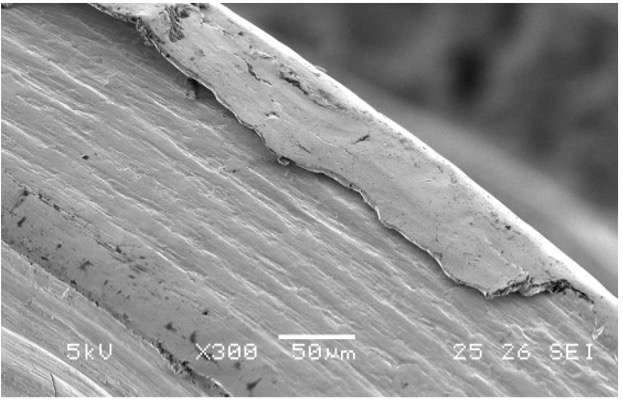

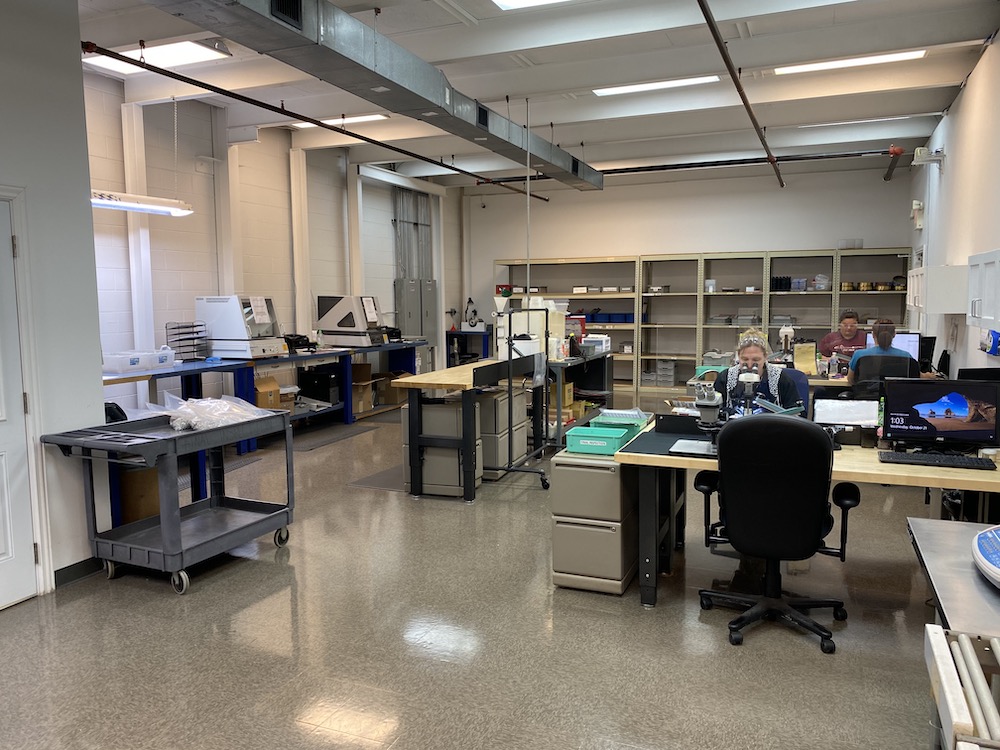
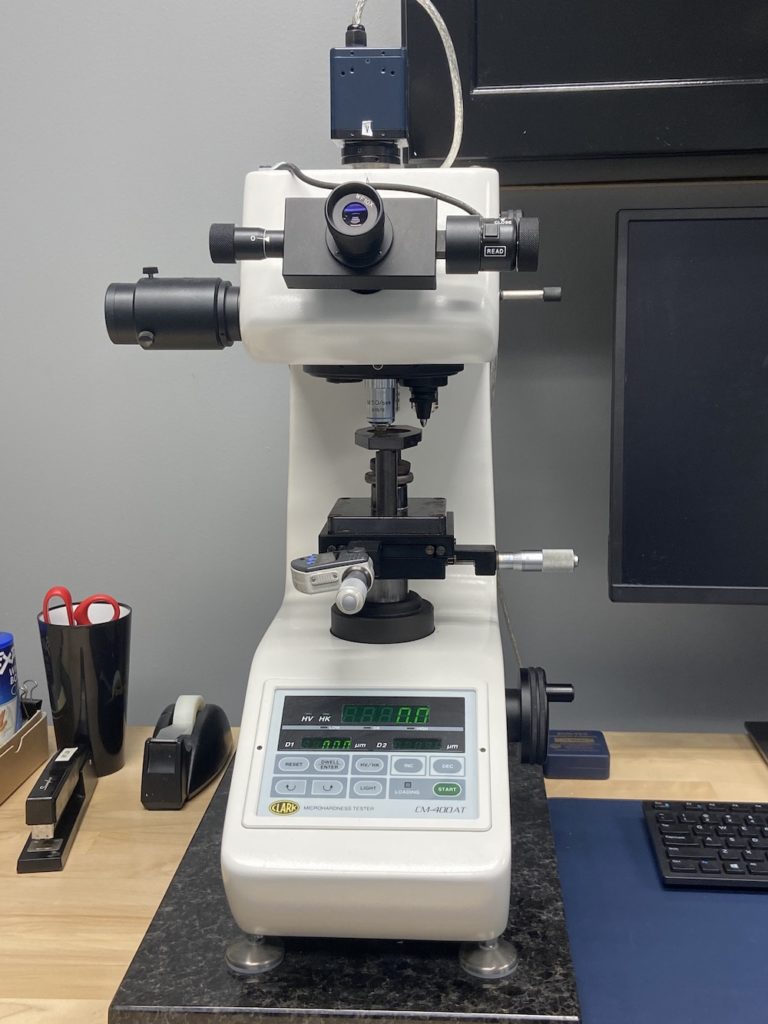
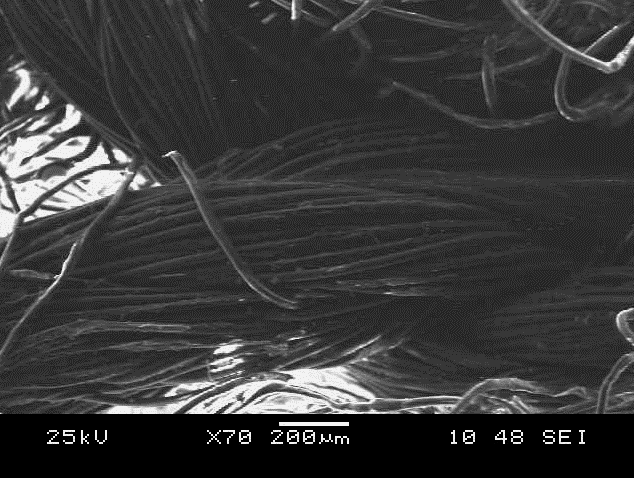
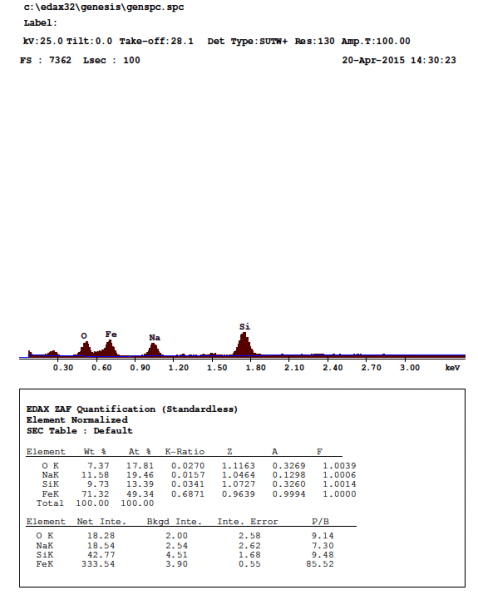
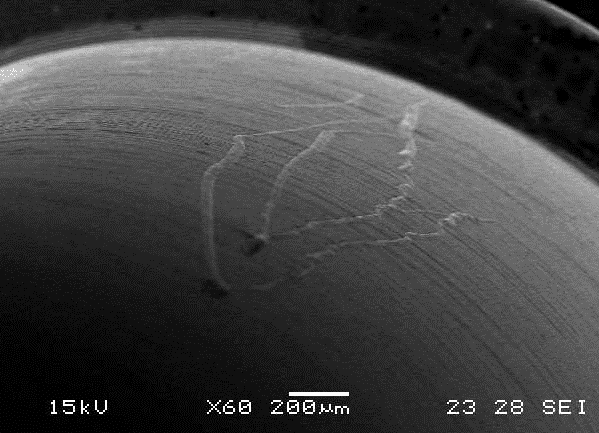
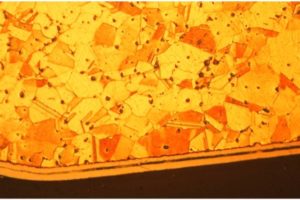
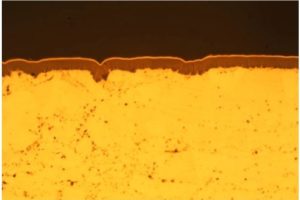
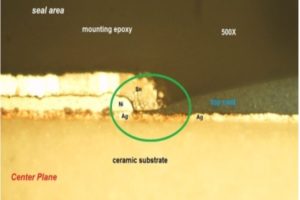
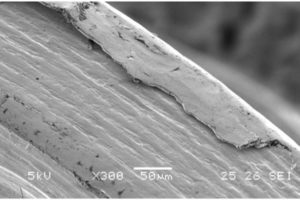
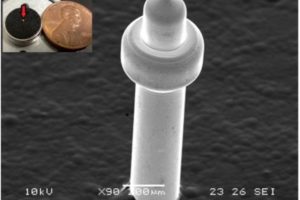

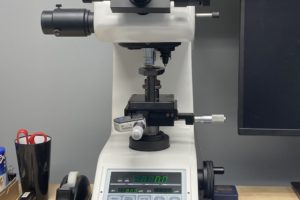
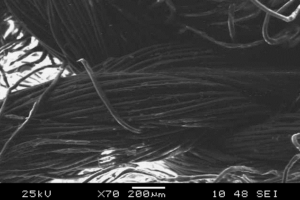
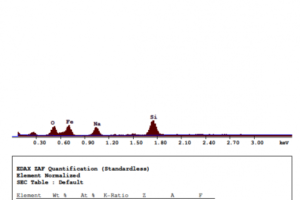
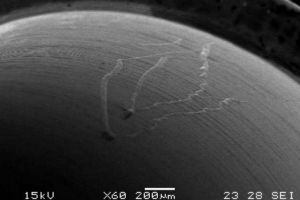
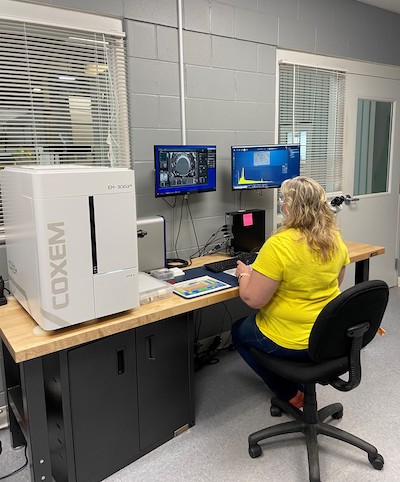
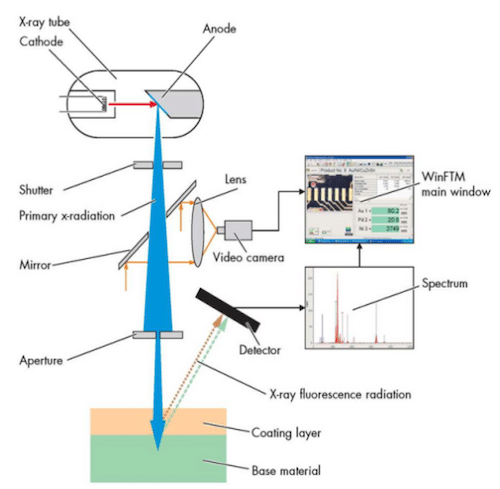 X-Ray Fluorescence (XRF) is a fast, convenient, and non-destructive method used for material analysis, elemental composition, and plating thickness testing for all types of materials. This measurement method is recognized in several industry standards including the B568-98 ASTM standard. XRF requires no use of chemicals and sample preparation is not necessary. XRF provides an accurate thickness measurement in as little as 15 seconds. This happens by measuring the fluorescent (secondary) X-ray emitted from a sample after it has been excited by a primary X-ray source. Since all of the elements present on the sample have special characteristics that are unique, this allows the XRF to be able to identify each element and makes it an excellent source for qualitative and quantitative analysis of material composition and thickness.
X-Ray Fluorescence (XRF) is a fast, convenient, and non-destructive method used for material analysis, elemental composition, and plating thickness testing for all types of materials. This measurement method is recognized in several industry standards including the B568-98 ASTM standard. XRF requires no use of chemicals and sample preparation is not necessary. XRF provides an accurate thickness measurement in as little as 15 seconds. This happens by measuring the fluorescent (secondary) X-ray emitted from a sample after it has been excited by a primary X-ray source. Since all of the elements present on the sample have special characteristics that are unique, this allows the XRF to be able to identify each element and makes it an excellent source for qualitative and quantitative analysis of material composition and thickness.